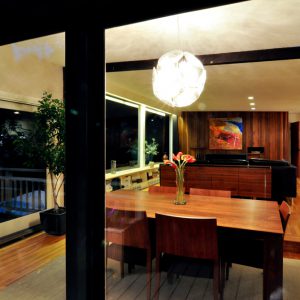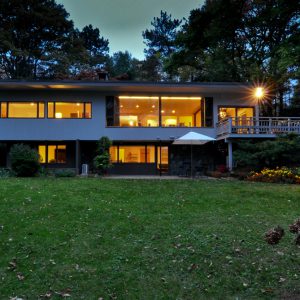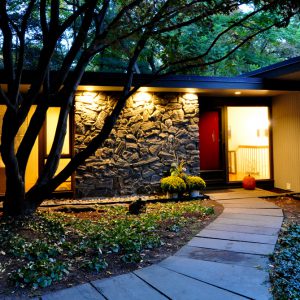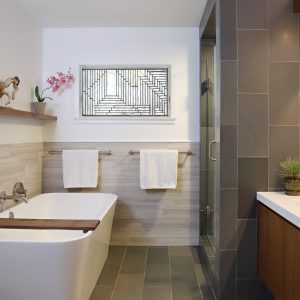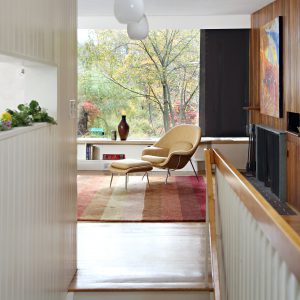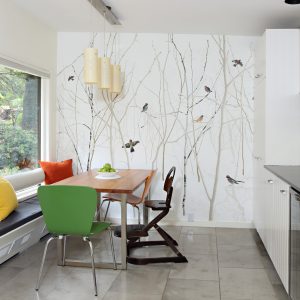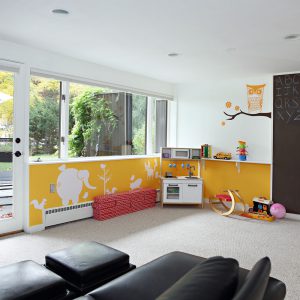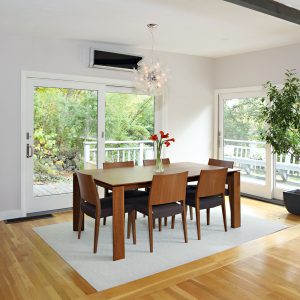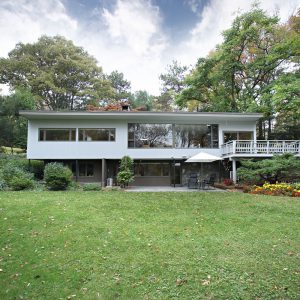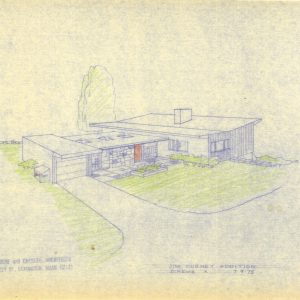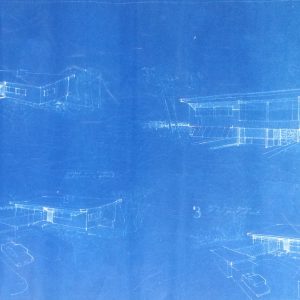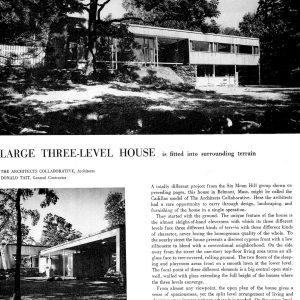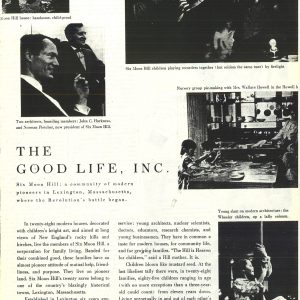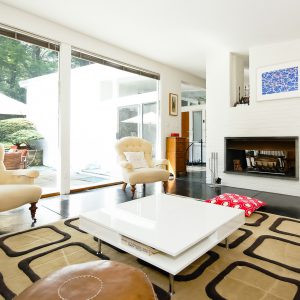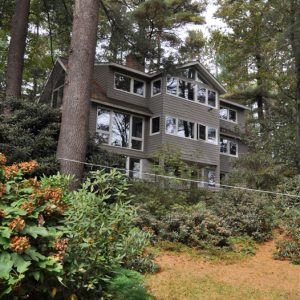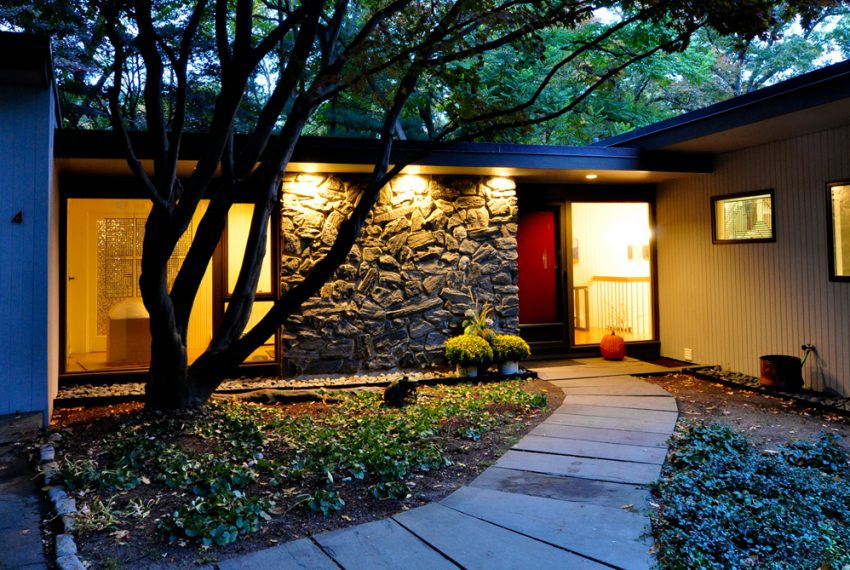
Click any photo to enlarge and view as a slide show.
Twilight shots by John Tse. All others by Lara Kimmerer.
- Click for Full Post
- Click to See Full Post
- Click for Full Post
- Click to See Full Post
(SOLD) Rare opportunity to own an updated Norman Fletcher/TAC-designed International style Modernist house in the world-renowned, historic Six Moon Hill neighborhood. Enjoy one-level living with four bedrooms, two full baths (third full bath on lower level), and an open floor plan encompassing the kitchen, dining room, a living room with a fireplace, and an attached garage, all on the main level. Take in the sweeping views of the garden and lawn from walls of glass, or step out onto the deck. The kitchen has Ann Sacks limestone tile floors and Silestone counters. The current owners upgraded to a new spa-like bath with electric radiant floor heat, adjacent to the master. A family room, third full bath, and an office/potential fifth bedroom are on the walk-out lower level. A new boiler was installed in 2012, and most of the original windows have been replaced. Plop down in your Eames chair and start living your Dwell-like dreams today in this turn-key home. 4 Moon Hill Road. Offered at $1,198,000. Showings begin after brokers’ preview Friday, October 25. Public open houses Saturday, October 26 and Sunday, October 27 1:00-3:00 each day. Contact us for a private showing.
Some more details:
- Four bedrooms (one with no closet) on main level
- Three full baths, two on main level.
- One-plus-car garage
- 3016 s.f. of living area on two levels
- 28,132 s.f. (.65 acre) lot.
- Air conditioning
About Moon Hill and TAC
There are two ways to go — towards competition or towards collaboration. A contest can be stimulation, but as a way of life competition is wasteful. Time and energy are dissipated in overlapping efforts. The efficiency of collaboration lies in interaction directed towards the solution of a problem. A world that believes only in survival through competition must always be at war. And if the winner is preoccupied with winning, he may find himself on a mountain he never would have chosen to climb. In architecture, rivalry may lead to irrational design; it may put aside a direct solution in favor of a more sensational one.
To fight for conviction is another matter, and this fits in with collaboration. The essence of collaboration is the strength of the individual. When collaboration is operating as it should, a good idea will be carried by conviction, recognized by others without loss of their own prestige.
— Sally Harkness
In 1947, one young group of forward-thinking architects, The Architects Collaborative (TAC), founded by Bauhaus pioneer, Walter Gropius — who had fled Germany and joined Harvard University Graduate School of Design — purchased 20 acres of land on the east-central side of Lexington and formed a non-profit corporation for the community they named Six Moon Hill.
According to personal interviews with some of the partners and residents conducted by Aram Demirjian, the land had been owned since 1908 by a retired automobile dealer, described as “a stubborn and slightly intimidating man… suspicious of TAC’s motives for their desire to purchase his land,” which was a wooded hill and on the east side of town, and thus convenient to the TAC office in Harvard Square. Ultimately a deal was struck with the former auto dealer, who had held on to six 1920s-era Moon cars in a barn on the property. Appropriately, the development was named Six Moon Hill.
Laid out on a cul-de-sac, they set aside common land to leave as open space, including an area with a swimming pool. They built about 26 houses in the International modernist style: walls of glass, open floor plans, flat or slant roofs, simple and inexpensive materials, austere lines, nestled thoughtfully into the landscape. Though they at first might have seemed out of place—European modernist statements plopped down in the middle of wooded Lexington and adjacent to farms—they actually reflected the old clichés regarding New England Yankee frugality, sensibility, and working with materials at hand. As an article in the Boston Globe pointed out not too long ago, the houses of Moon Hill “remain remarkably unpretentious and livable.” And, when one stops to think about it, what would have been more out of place than Grecian columns on a farmhouse in the middle of a New England field when those originally started appearing? The Moon Hill houses were as unassuming, if not more so, than the good old white-clapboarded colonials dotting the town. Unlike reproductions of that familiar style, the modernist architects saw no need to busy up the facades of their homes with fake shutters, mullioned windows, cupolas and the like. And the use of rubber, tar and gravel, and other new building materials and techniques did away with the need for steeply gabled roofs to dump away the snow, rain and other byproducts of the New England climate.


